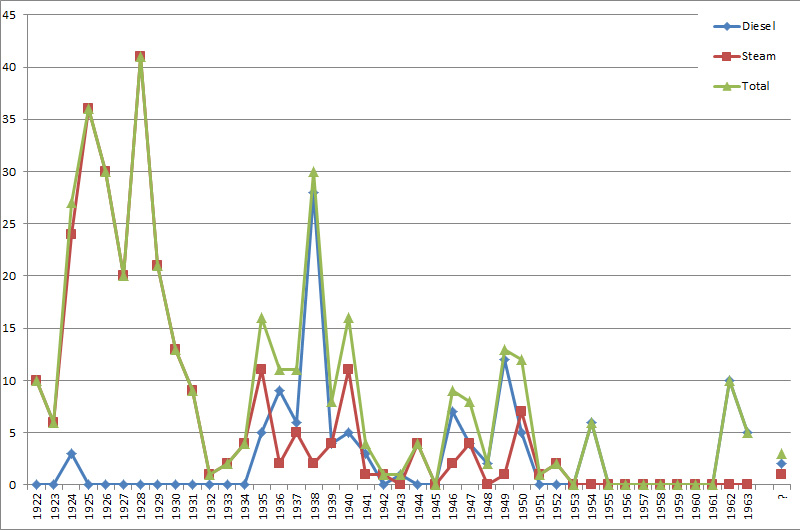Garrattfan's Modelrailroading Pages

Articulation
Introduction on Du Croo & Brauns
Short history
I'm not going to "entertain" you with elaborate detail of the company's history and mergers. Suffice to say that the factory started activities in Amsterdam in 1906 on Du Croo's initiative. In 1908 Brauns joined in and the company was duely renamed. Main products were just about anything related to rail transport. In 1917 a subsidiary was founded in Weesp with the express intent of starting locomotive production. The first engine left the plant in 1922. Over the years D&B produced some 400 steam and diesel locomotives with the heydays in the twenties.

.png)
After the war output dwindled and locomotive production effectively ceased in 1952, the company turning to other activities. After some mergers the company ceased all activities in 1983.
The builder's archive was destroyed after cessation of activities so there is precious little information available, most of it is compiled in Jan de Bruin's book, unsurprisingly titled "Du Croo & Brauns Locomotives" (ISBN 90-71513-02-5). The book is out of print but I had a copy for a reasonable price within a few weeks after I started searching for one (try Boekwinkeltjes.nl or Antiqbook.nl).
The production, an overview
| Product | Number |
| Steam | 276 |
| Diesel | 117 |
| Road engine | 11 |
| Boiler | 5 |
| Total | 409 |
Going over the total production some thoughts occurred to me.
- Rather surprising is that D&B were late in the market. By the time production got into gear, in the early twenties, competitors like Orenstein and Koppel were well established. Despite that D&B managed to get a good share in the Indonesian market. So either they must have been well connected or they had a genious in the marketing department, probably both. 208 out of 276 steam locomotives, or 75% of their output, went to Indonesia. True export to other countries than the Netherlands and its overseas colonies amounted less than 10%
- The heyday was in the twenties with only one spike in the thirties caused by a single order of colliery diesel locomotives. So, despite an initial success, they eventually were unable to maintain production levels.
- But, most important for this site, D&B turned out the highest concentration of articulated steam locomotives in the Netherlands, having built 108 articulated locomotives, more than double the amount of all other Dutch articulateds together.
- That D&B built mallet altogether is very surprising. The Gölsdorf axle had been around for about two decades and was commonpplace in European locomotive construction in the early twenties. Mallet building of 0-4-4-0 mallets had long before ground to halt to the favour of the easier to build and operate Gölsdorf x-8-x wheels arrangements. So it baffles me why D&B built mallets at all.
So it is time to look at the two basic types that D&B turned out: 47 Klien-Lindners and 61 Mallets.

Sign my
GuestBook